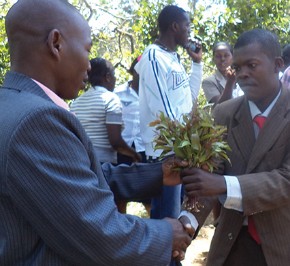Khat: A gift from God?

A close look at the right corner of Ikenda’s mouth reveals a green coloration. Were it not for the fact that he had been introduced to me as a church elder and that we were now seated in the office of the East African Pentecostal Church, I would have seen him as an ordinary Kenyan user of khat.
Putting his right hand into the inner left pocket of his leather jacket, Ikenda fetched a small bunch of khat leaves, called miraa in Kenya, and carefully placed it on the table, as if welcoming all to join him in the feast. A bottle of canned soda stood on the table, an aid in chewing the stimulant. Picking one tip at a time, he plucked off the lower leaves and chewed the soft parts, continually adding khat to his already bulging mouth.
Khat is a plant native to East Africa which is said to cause a sense of excitement and euphoria. In 1980, the World Health Organization classified it as a mildly addictive drug.





